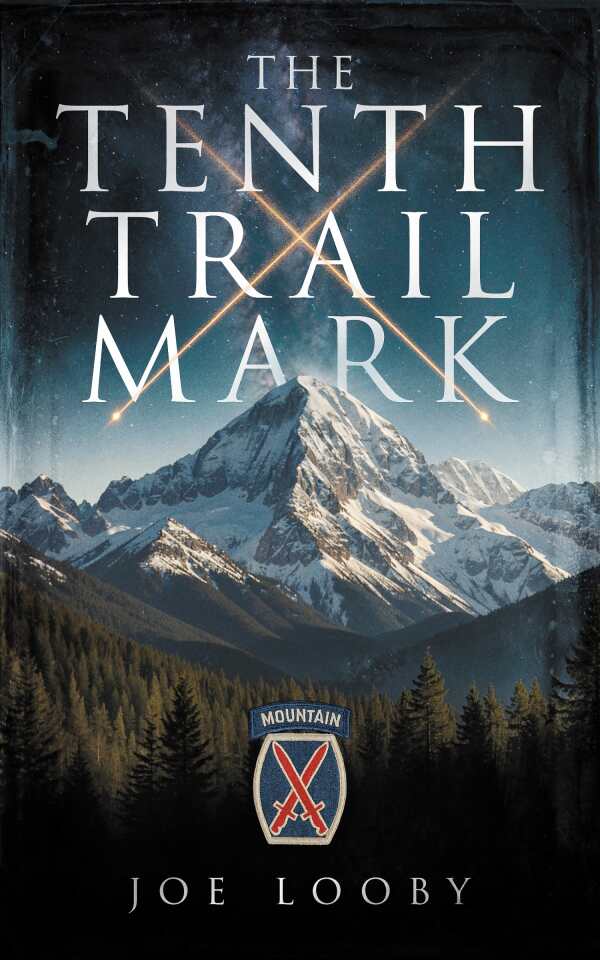The Tenth Trail Mark
Harrowing wartime experiences leave an indelible mark on the lives of hardy soldiers in the gripping historical novel The Tenth Trail Mark.
In Joe Looby’s solemn historical novel The Tenth Trail Mark, a soldier undertakes a perilous mountain mission during World War II.
In upstate New York, eight-year-old Johnnie, whose father died in World War I, prefers the forest to the classroom. He hunts for squirrels to provide for his mother and sister. Then an Olympic skier, Rolf, takes Johnnie and his friend Edgar under his wing, teaching them the sport and heartfelt life lessons. Under Rolf’s mentorship, Johnnie becomes a ski patroller. This work is interrupted when he and Edgar enter World War II—Johnnie as an enlisted soldier who prepares fellow soldiers for harrowing mountain missions, and Edgar as an officer.
The book’s early chapters meander through Johnnie’s childhood, covering how he attained the skills that become vital to him in the war. Once he’s sent abroad, the pace accelerates somewhat, though rushing through key moments in his military career to arrive at a fateful mission on Mount Belvedere, whose events feel inevitable. Transitions between the scenes rely on summary bridges like “that winter” or “in the months that followed” that smooth the time jumps but flatten the urgency and tension of Johnnie’s wartime experiences.
The characterizations are somewhat archetypal. Johnnie is a self-reliant outsider, Edgar is a privileged but loyal friend, and Rolf is a principled mentor who shares distilled life lessons with the boys. Depth is achieved, though, through people’s formative actions and consistent behavior across decades. Johnnie, for example, exhibits early persistence while hunting squirrels; this translates into tactical patience during his rescue missions and combat maneuvers. Their emotional states are relayed via gestures or small actions rather than in their words. The secondary characters are less fleshed out, including Johnnie’s mother and the men Johnnie serves alongside.
The prose balances rugged realism with lyrical details. Winter scenes are wrought in precise and tactile language, with notes of “the flicker of frost” on Johnnie’s breath and about wax on skis being redolent of sweet earth. The final assault on Mount Belvedere is claustrophobic as the blizzard snaps across the mountain, obscuring the landscape and mortar positions and shrinking Johnnie and his squad’s perspective to inches as hellfire rains down around them. And despite the brutality of such scenes, the violence is covered in a measured, restrained way: A German soldier dying is compared to a puppet with its strings cut.
The throughline from Johnnie’s boyhood trials to his intense wartime decisions is clear, and the final chapters carry the weight of his accumulated experiences and memories. The book’s ending is intense, focused on the immediate peril of the mountain missions; space for reflection is made in the resonant aftermath.
In the sweeping historical novel The Tenth Trail Mark, a team of winter-survival soldiers tests its courage, loyalty, and ingenuity while trying to break through an icy pass.
Reviewed by
John M. Murray
Disclosure: This article is not an endorsement, but a review. The publisher of this book provided free copies of the book and paid a small fee to have their book reviewed by a professional reviewer. Foreword Reviews and Clarion Reviews make no guarantee that the publisher will receive a positive review. Foreword Magazine, Inc. is disclosing this in accordance with the Federal Trade Commission’s 16 CFR, Part 255.

